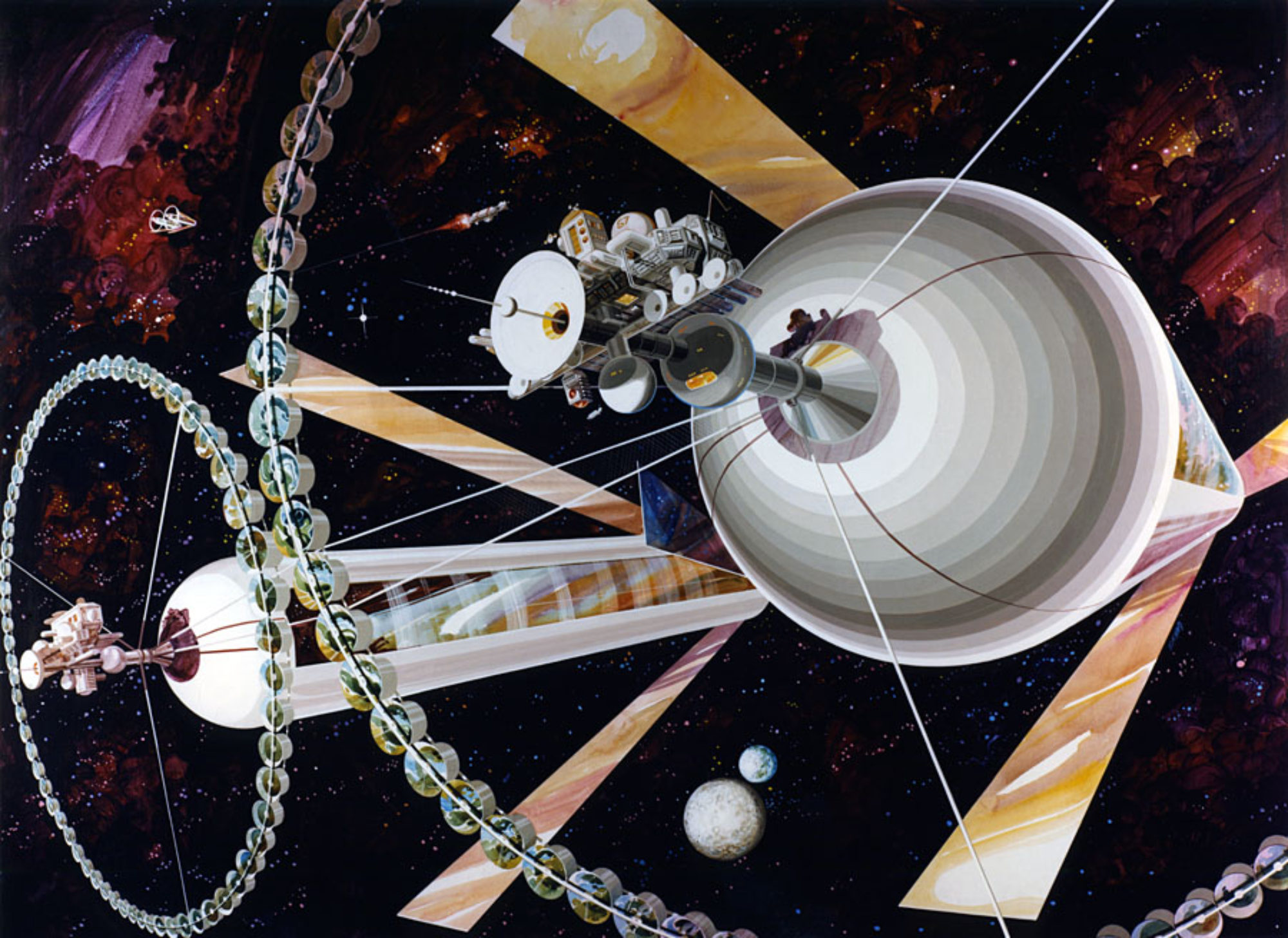
In this post I summarize a few selected presentations that stood out for me at the National Space Society’s International Space Development Conference 2022 held in Arlington, Virginia May 27-29.
First up is Mag Mel, the grand prize winner of the NSS Student Space Settlement design contest, awarded to a team* of students from St. Flannan’s College in Ireland. This concept caught my eye because it was in part inspired by Pekka Janhunen’s Ceres Megasatellite Space Settlement and leverages Bruce Damer’s SHEPHERD asteroid capture and retrieval system for harvesting building materials.
The title Mag Mell comes from Irish mythology translating to “A delightful or pleasant plain.” These young, bright space enthusiasts designed their space settlement as a pleasant place to live for up to 10,000 people. Each took turns presenting a different aspect of their design to ISDC attendees during the dinner talks on Saturday. I was struck by their optimism for the future and hopeful that they will be representing the next generation of space settlers.
Robotically 3D printed in-situ, Mag Mell would be placed in Ceres equatorial orbit and built using materials mined from that world and other bodies in the Asteroid Belt. The settlement was designed as a rotating half-cut torus with different angular rotation rates for the central hub and outer rim, featuring artificial 1G gravity and an Earth-like atmosphere. Access to the surface of the asteroid would be provided by a space elevator over 1000 km in length.
* St. Flannan’s College Space Settlement design team: Cian Pyne, Jack O’Connor, Adam Downes, Garbhán Monahan, and Naem Haq

Daniel Tompkins, an agricultural scientist and founder of GrowMars, presented his Expanding Loop concept of self replicating greenhouses which would be 3D printed in situ on the Moon or Mars (or in LEO). The process works by utilizing sunlight and local resources like water and waste CO2 from human respiration to grow algae for food with byproducts of bio-polymers as binders for 3D printing blocks from composite concretes. Tompkins has a plan for a LEO demonstration next year and envisions a facility eventually attached to the International Space Station. He calculates that a 4000kg greenhouse could be fabricated from 1 year of waste CO2 generated by four astronauts. An added bonus is that as the greenhouse expands, an excess of bioplastic output would be produced, enabling additional in-space manufacturing.


Phil Swan introduced the Atlantis Project, an effort to create a permanent tethered ring habitat at the limit of the Earth’s atmosphere, which he calls a Spacescraper. The structure would be placed on a stayed bearing consisting of two concentric rings magnetically attached and levitated up to 80 km in the air. In a white paper available on the project’s website, details of the force vectors for levitation of the device, the value proposition and the economic feasibility are described. As discussed during the talk at ISDC, potential applications include:
- Electromagnetic launch to space
- Carbon neutral international travel
- Evacuated tube transit system
- Astronomical observatories
- Communication and internet
- Solar energy collection for electrical power
- Space tourism
- High rise real estate
Phil Swan will be coming on The Space Show June 21 to provide more details.

Finally, the Chair of the Mars Society Steering committee and founder of MacroInvent Kent Nebergall, gave a presentation on Creating a Space Settlement Cambrian Explosion. That period, 540 million years ago when fossil evidence goes from just multicellular organisms to most of the phyla that exist today in only 10 million years, could be a metaphor for space settlement in our times going from extremely slow progress to a quick expansion via every possible solution. Nebergall suggests that we may be on the verge of a similar growth spurt in space settlement and proposes a roadmap to make it happen this century.
He envisions three settlement eras beginning with development of SpaceX Starship transportation infrastructure transitioning to robust cities on Mars with eventual para-terraforming of that planet. He also has plans for how to overcome some of the most challenging barriers – momentum and money. Stay tuned for more as Kent has agreed to an exclusive interview on this topic in a subsequent post on SSP as well as an appearance on The Space Show July 10th.
